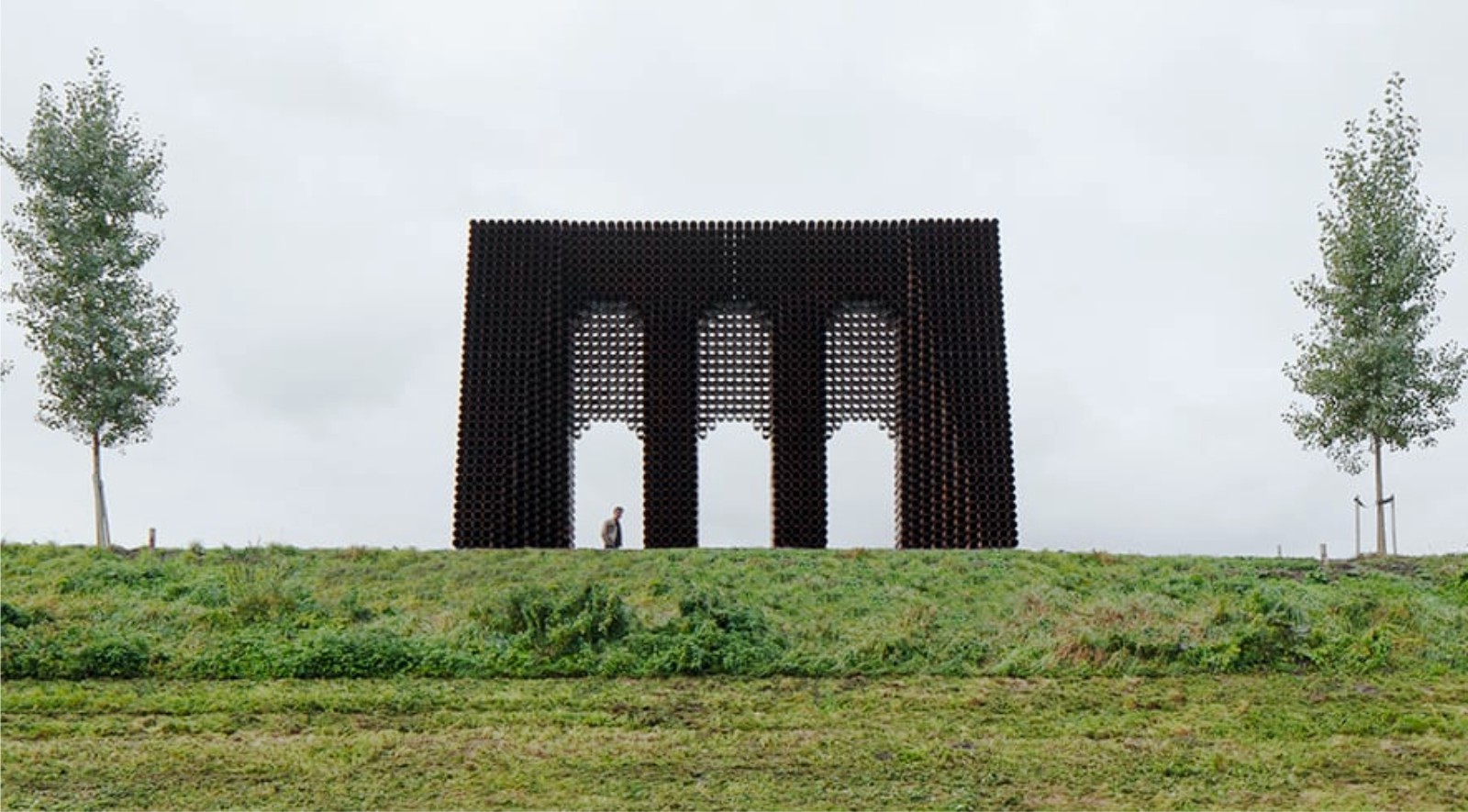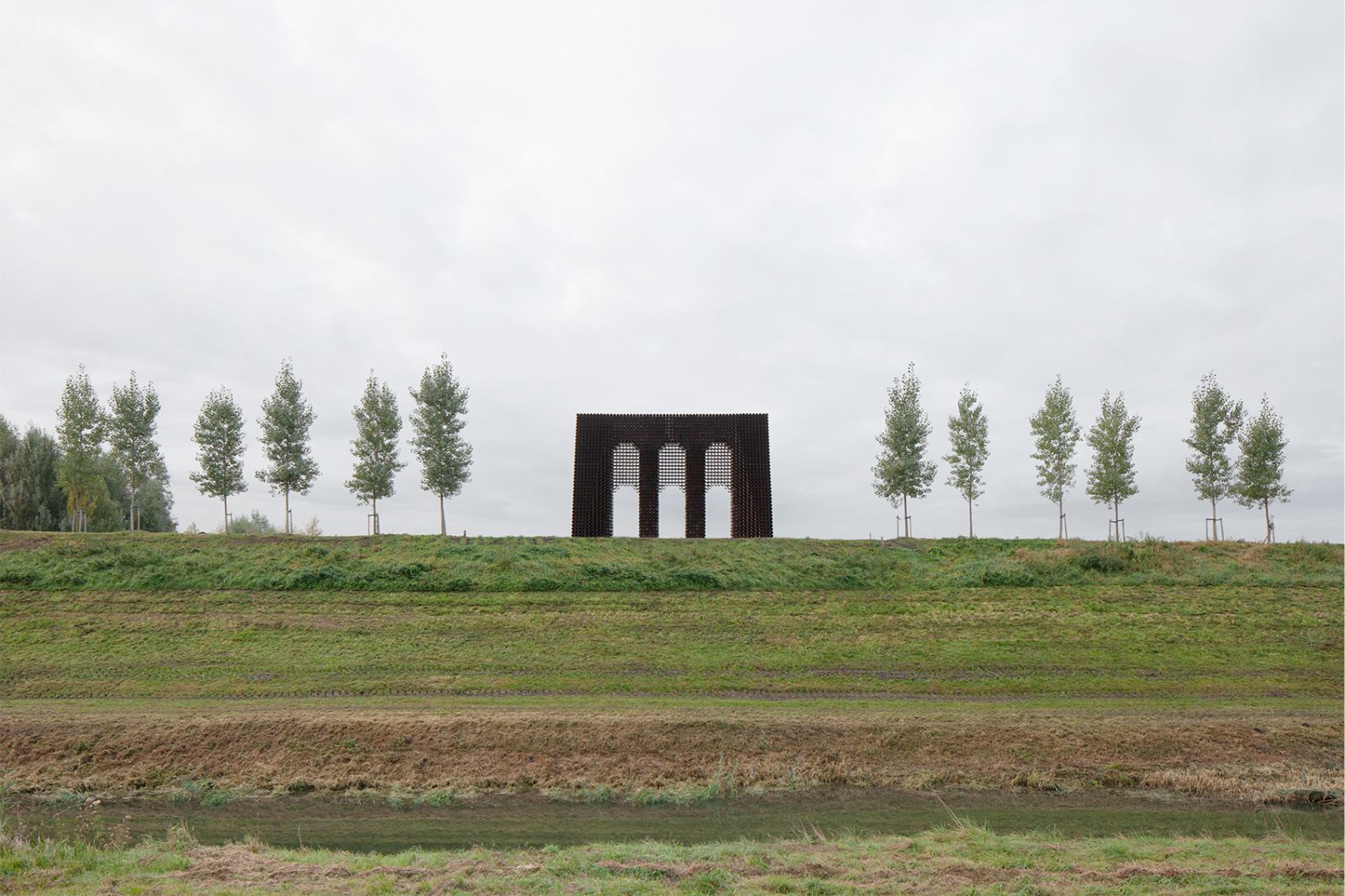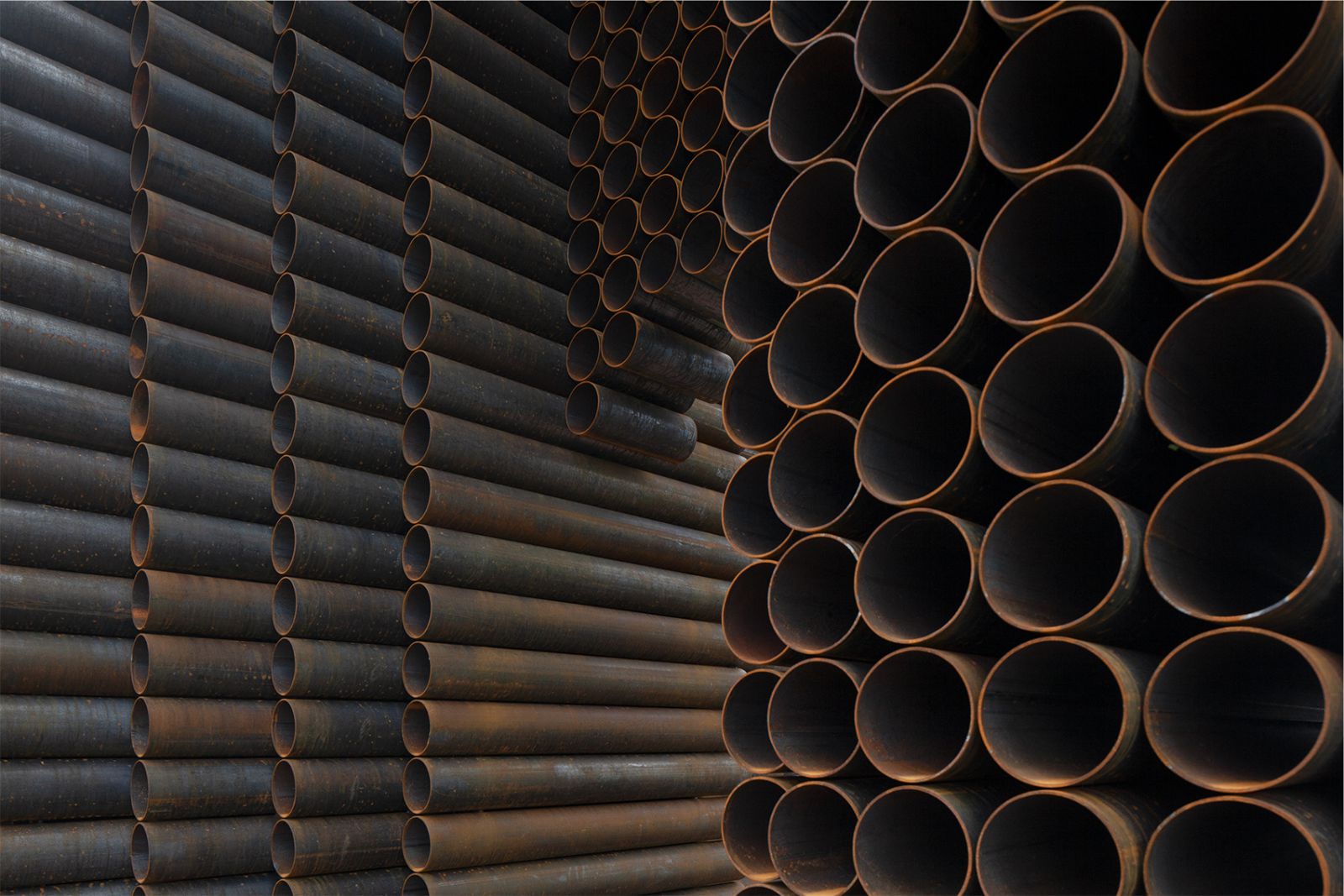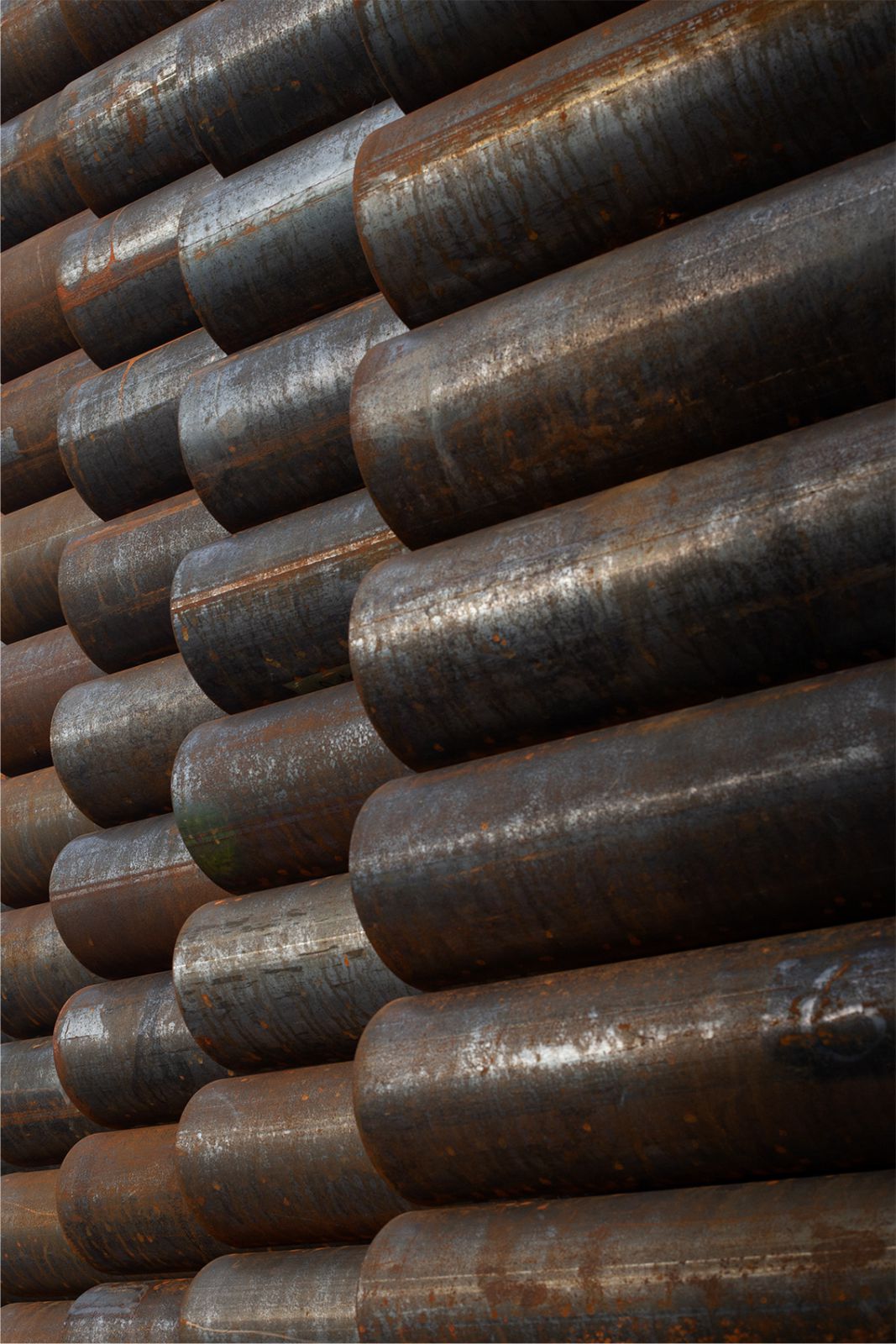The New Dutch Waterline was a historic defence line measuring 85 kilometres in length. This ingenious system of dykes, sluices, canals, forts and bunkers, capable of creating deliberate floods, was used in the period between 1815 and 1940. The Waterline made it possible to flood kilometres of land in the west of the Netherlands, thus making the area inaccessible to the enemy.
The New Dutch Waterline has been on the Unesco World Heritage list since 2021. To mark the occasion, the Province of Utrecht launched a competition for the creation of a new work of art in honour of the New Dutch Waterline. The competition was won by the architect and artist duo Gijs Van Vaerenbergh.
Lock
The Waterline is an extensive system that lies hidden in the landscape. Gijs Van Vaerenbergh chose to work with the figure of a lock, one of the most important elements in this system, used as a gate to hold back the waters. As such, it forms a crucial link between dykes and embankments.
When it is opened, the defence system is activated, causing the water to overflow the banks and inundate the area. The artwork is an abstract reconstruction of the figure of the lock. Placed on top of the slope next to the motorway, it is given a prominent place in the landscape.
Shift
Gijs Van Vaerenbergh enhance recognisability by making reference to familiar architecture and traditional building elements, which are part of our collective memory. By presenting the lock in its essential form, that is, three arched openings at right angles to the viewing direction, the image is shifted from that of a lock to that of an (entrance) gate.
As the sculpture is situated on top of the slope, it is also reminiscent of a triumphal arch. The artists’ play with the recognisability of these different forms imbues the work with ambiguous meanings. Gijs Van Vaerenbergh demonstrate that form, architecture and space can be fluid and not limited to a singular image. They provide references and depict typologies, which they simultaneously call into question and deconstruct.

Photo © Johnny Umans
Mutability
Viewed from an angle, Waterlinie Monument looks massive. The work was formed through the stacking of hundreds of open steel tubes of different lengths. A field of tension is created: the logic of stacking creates an abstract repetition; the diversity of lengths creates an irregular relief.
From a distance, the image of the lock is dominant; up close, the work’s appearance is determined by the rhythm and composition of the tubes. Here again, as in their earlier works, Gijs Van Vaerenbergh strive for simplicity and the most fundamental way of building.

Photo © Johnny Umans
The slope onto which the work is placed, the footpath, the A12 motorway and the water, they all run parallel to each other and at right angles to the tubes of Waterlinie Monument. As such, the work always presents itself as a solid stack of tubes, except when visitors pass by it. The gaze then not only passes through the arches of the gate, but also through the tubes themselves.
For a brief moment, the image dissolves; the artwork becomes partially transparent. This creates a special, elusive moment of wonder and a new perception of spatiality. It is only when we let go of our frame of reference and use our senses, that we can experience the multifaceted character of Waterline Monument. Source by Gijs Van Vaerenbergh.
- Location: Utrecht, Netherlands
- Artist: Gijs Van Vaerenbergh
- Art Liaison: Véronique Baar (QKunst)
- Client: Recreatieschap Stichtse Groenlanden with the support of Rijkswaterstaat, province of Utrecht and BPD Cultuurfonds and in collaboration with Down Under and the communities Houten and Nieuwegein
- Year: 2021
- Photographs: Johnny Umans, Courtesy of Gijs Van Vaerenbergh







